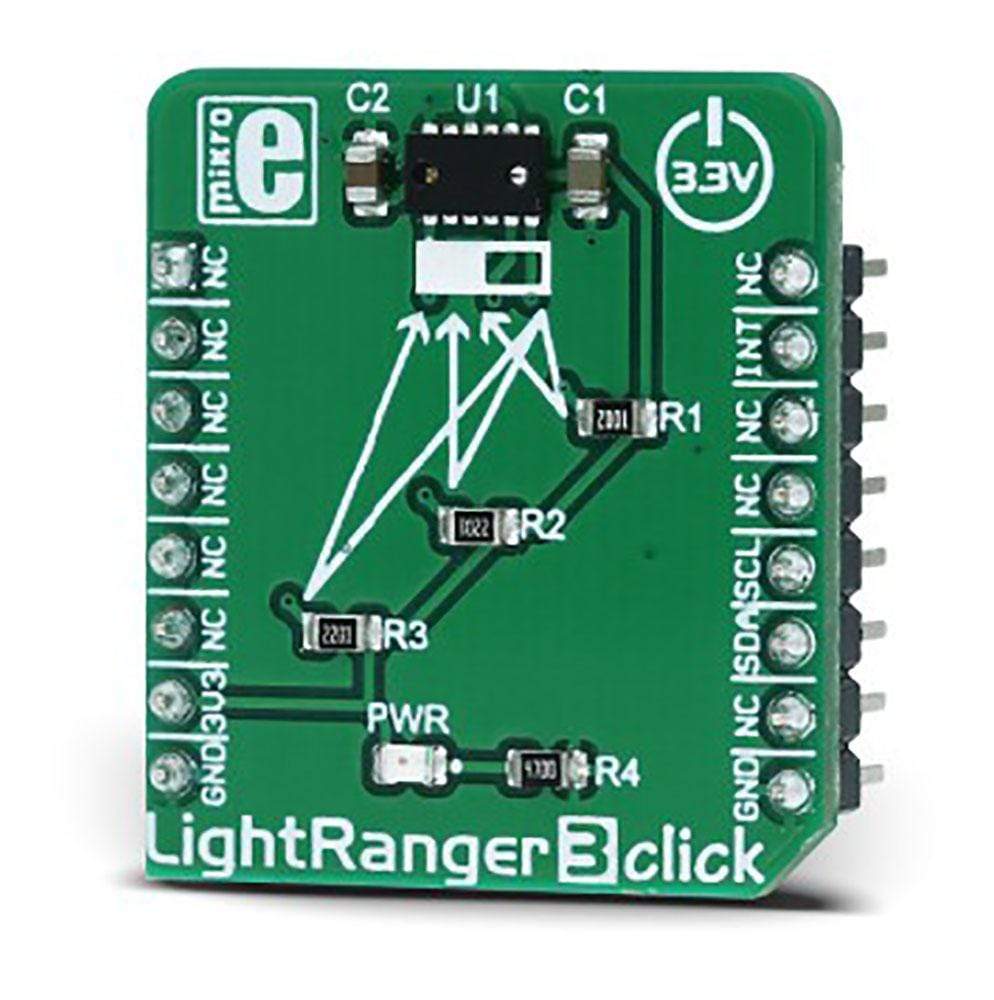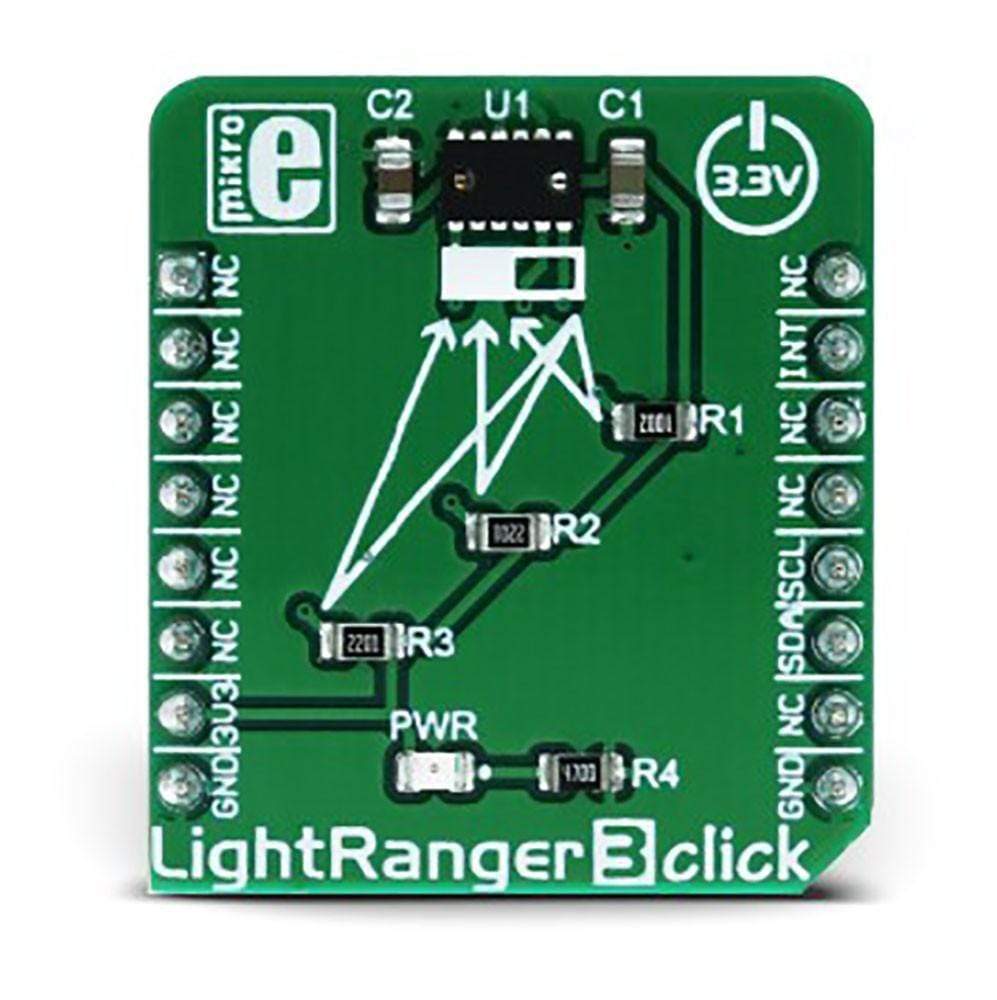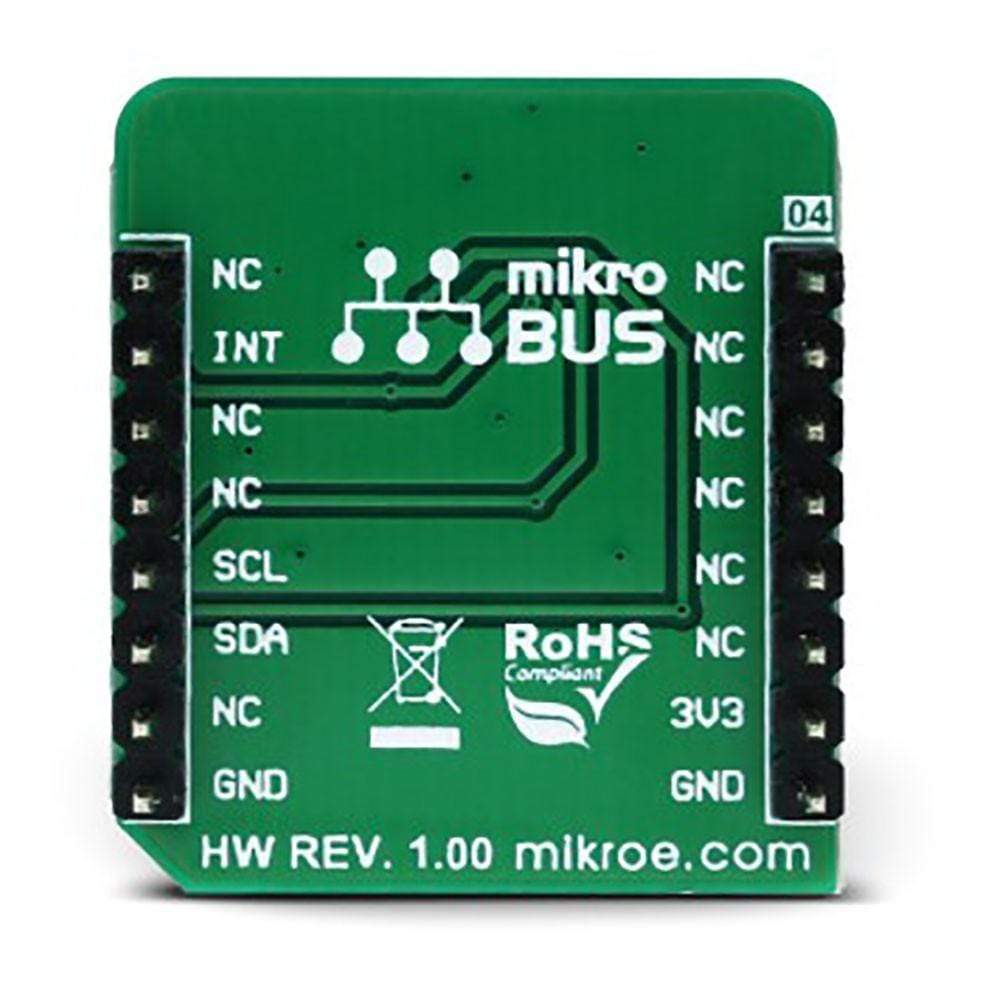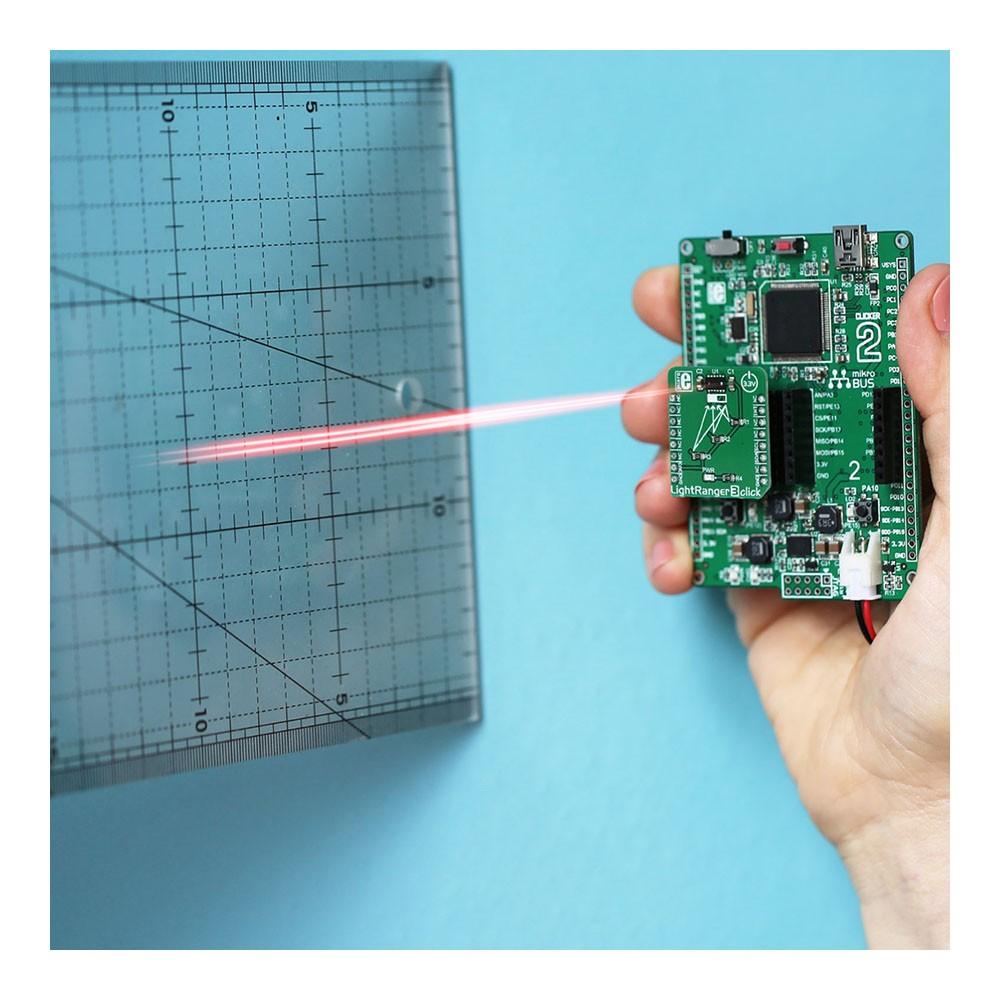



Overview
The Light Ranger 3 Click Board™ is an accurate distance measurement Click Board™ based on a ToF (Time of Flight) measurement principle. The Simblee enabled RFD77402 rangefinder module from RF Digital is a complete measurement stack on the chip. It is surprisingly easy to work with, as this highly integrated range finder module exposes the only I2C interface and INT pin to the host controller. It features the VCSEL, a Vertical Cavity Surface Emitting Laser, used to emit a narrow band of a harmless modulated light beam in the IR range (850 nm), and a receiving sensor, which can detect the reflected light. It can measure distances up to 2000mm, with up to 10% accuracy. The device is rated Class 1 LASER product, operating in the IR (invisible) spectrum range.
Downloads
Das Light Ranger 3 Click Board™ ist ein Click Board™ zur genauen Entfernungsmessung, das auf einem ToF-Messprinzip (Time of Flight) basiert. Das Simblee-fähige RFD77402-Entfernungsmessermodul von RF Digital ist ein vollständiger Messstapel auf dem Chip. Es ist überraschend einfach zu handhaben, da dieses hochintegrierte Entfernungsmessermodul die einzige I2C-Schnittstelle und den einzigen INT-Pin zum Host-Controller freigibt. Es verfügt über den VCSEL, einen Vertical Cavity Surface Emitting Laser, der zum Aussenden eines schmalen Bandes eines harmlosen modulierten Lichtstrahls im IR-Bereich (850 nm) verwendet wird, und einen Empfangssensor, der das reflektierte Licht erkennen kann. Es kann Entfernungen bis zu 2000 mm mit einer Genauigkeit von bis zu 10 % messen. Das Gerät ist als LASER-Produkt der Klasse 1 eingestuft und arbeitet im IR-Spektrumbereich (unsichtbar).
| General Information | |
|---|---|
Part Number (SKU) |
MIKROE-3103
|
Manufacturer |
|
| Physical and Mechanical | |
Weight |
0.018 kg
|
| Other | |
Country of Origin |
|
HS Code Customs Tariff code
|
|
EAN |
8606018713318
|
Warranty |
|
Frequently Asked Questions
Have a Question?
Be the first to ask a question about this.




